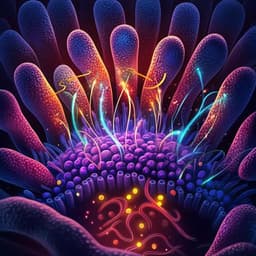
Biology
ATP induces folding of ALS-causing C71G-hPFN1 and nascent hSOD1
J. Kang, L. Lim, et al.
Discover how ATP transforms C71G-hPFN1 into a fully folded state and induces nascent hSOD1 into a mix of folded and unfolded states. This exciting research by Jian Kang, Liangzhong Lim, and Jianxing Song sheds light on the potential role of polyphosphates as primordial chaperones and offers valuable insights into age-related familial ALS onset.
Playback language: English
Related Publications
Explore these studies to deepen your understanding of the subject.







